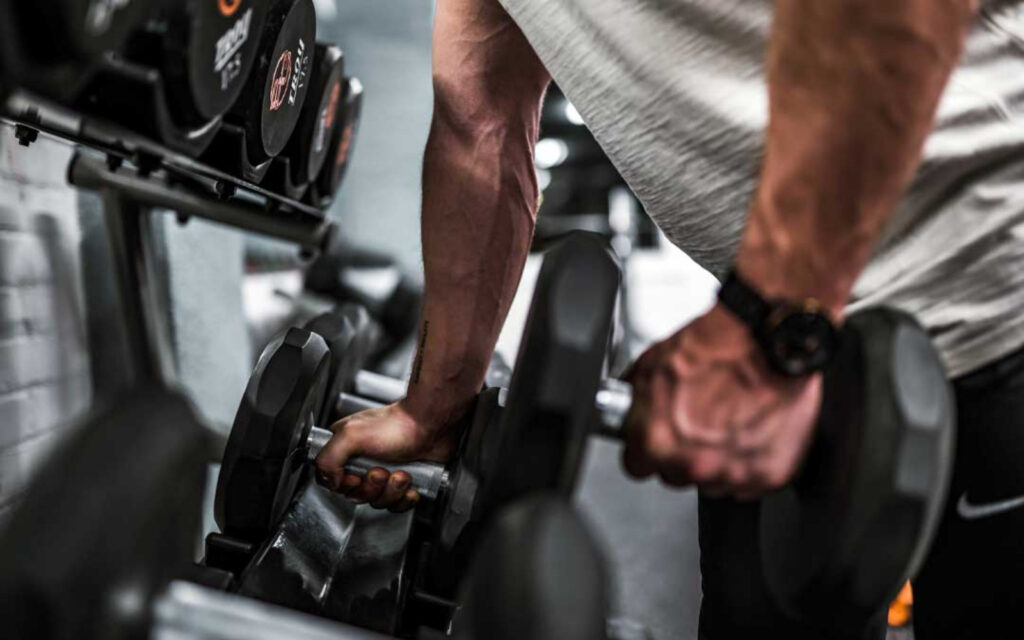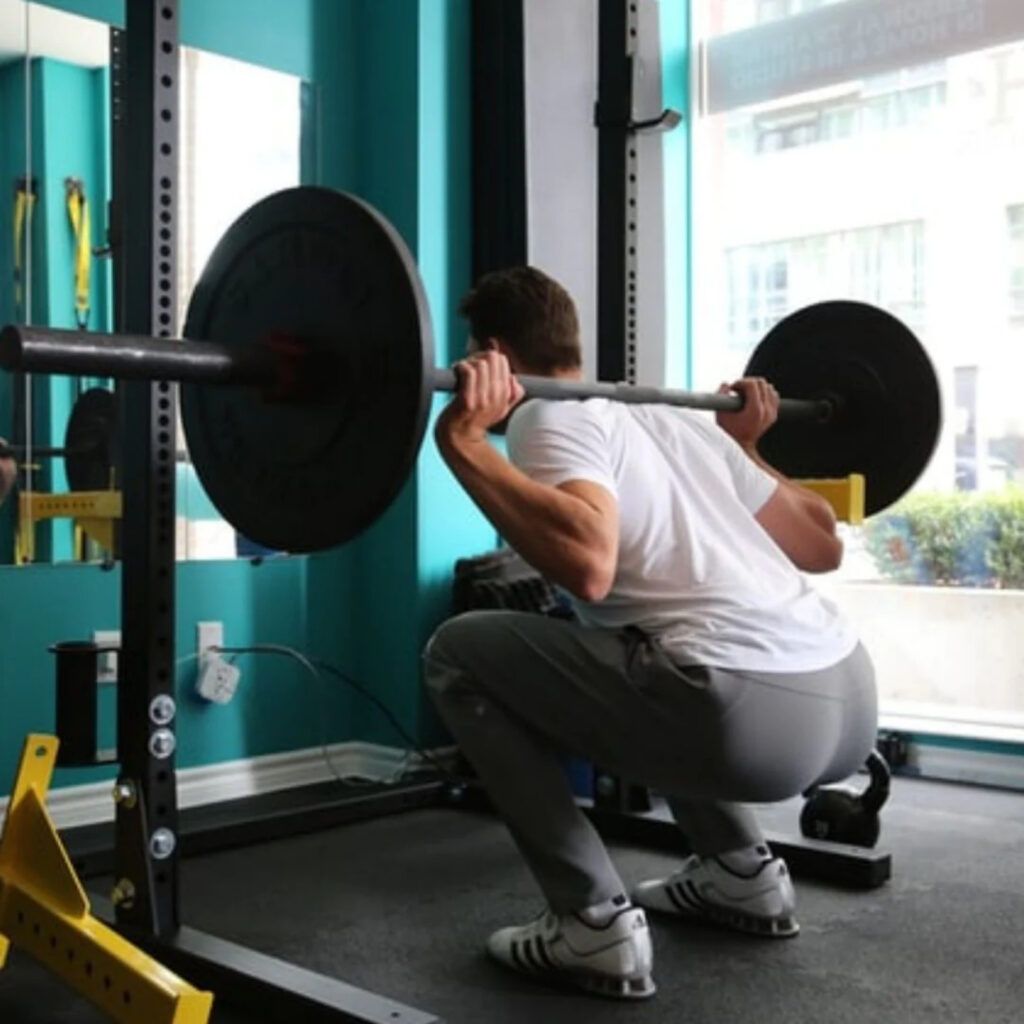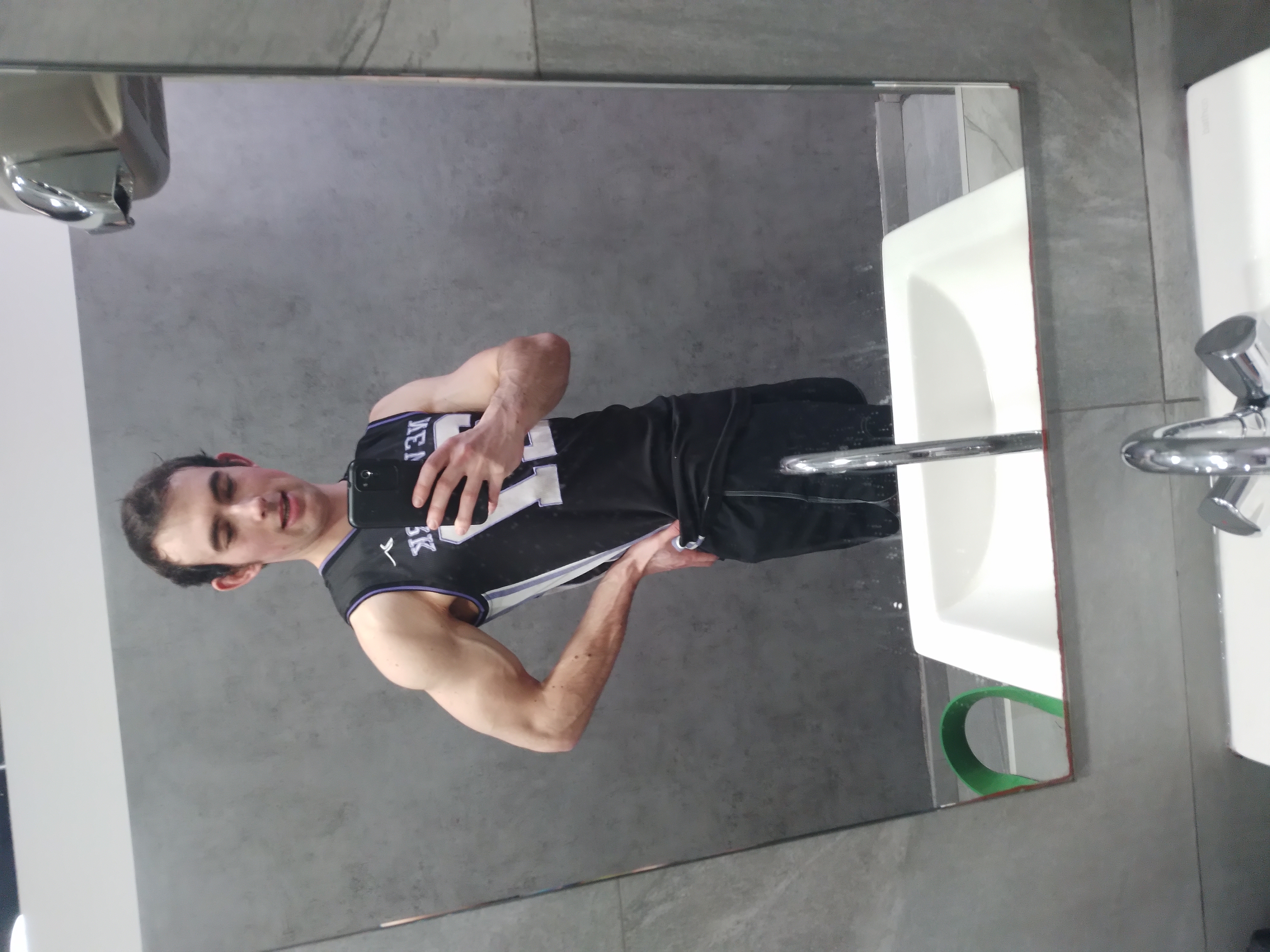How to gain muscle fast for skinny guys
Hi, all the skinny people out there who want to gain muscle fast. It’s been a while seen I posted! I thought there was no better way than to come back with none other than an article which is a part of my 3 part series all about how to gain muscle fast for skinny guys. In this article, I will give you advice on training and programming. In my next 2 articles, I will advise you on all things nutrition and fatigue management respectively. You can start putting what you learn into practice immediately to start seeing results fast.
Enjoy the process.
How do I know these tips work? Well they worked for me, a self-described hard gainer and skinnier guy who always thought “I’m too skinny”. I looked at the big muscular guys my age and thought “Why can’t I be more like them?”. Fast forward a few years from that point and after suffering an injury, I was introduced to the gym to start a rehab program. Let’s just say it turned into a bit of a love story! I have continued to train in the gym since then and have managed to learn some tips and tricks along the way. I would like to share these with you. I’ve managed to add quite a bit of muscle mass and strength. This is a world away from where I started. You can be just like or close to the natural muscular guys too. With enough dedication, the right knowledge, and being consistent over some time. Without further ado, let’s talk about how to gain muscle fast as a skinnier guy or girl.
Training to gain muscle for skinny guys.

Alright, for you to turn from skinny with little or no muscle to strong and muscular..3 things are going to have to be dialed in. That’s your training, nutrition, and managing the fatigue that comes with training. If one of these 3 pillar’s are out of sync, it will affect the other pillars. Leading to at worst poor results and injury and at best very little progress which is very demoralizing. I know how hard some of you train, but the results just don’t seem to come no matter how much effort you put in. You need a program or a system that is well structured, a science-backed plan devised by someone who knows what they are doing. So to jump to the first pillar (not literally, I hope!) we are going to talk all about training.
When I say training, I mean resistance training with barbells, dumbbells and machines. Just with these instruments you can pretty much do the majority of the exercises out there, You will get impressive results. Machines are not mandatory but can be useful for some selective exercises.
Directed Adaption
What is directed adaption? Directed adaption states in order to bring about an adaptation or change you need to make repeated and similar efforts over a period of time provided by a stimulus to see results. Imagine if you were trying to learn 3 different things at once. You want to learn how to cook, how to speak Spanish and play the piano. That’s a whole lot of different skills which are going to need ample amounts of energy poured into each of them to see results. Now imagine instead of focusing on all 3 you choose to focus on just one, let’s say learning Spanish. You will x3 your results because you have more energy and more focus to apply to just that which will lead to much better results compared to spreading your net too thin.
In focus, we trust.
The same with gaining muscle. Marathon training and playing other sports, though good for your health and very fun will not lead to more muscle gain but are actually taking away already finite resources, which could be better used to build muscle. So we want to make sure all parts of our training and to some degree our lives (depending how serious you are about it) are all supporting our goal to build more muscle and actually make change within our bodies.
The preparatory phase and myofribillar phase.
This leads on nicely to the next part. Building muscle or muscular hypertrophy is comprised of 2 parts: The preparatory phase and the myofibrillar phase. In the former while weight training we see swelling of the muscle, more glycogen present in the muscle, more proteins and dislocation of satellite cell nuclei in the muscle cells. In the latter phase, units of myofibrils and units of muscle fibers are developed which help us to produce force.
Locked and loaded.
In the first phase, this is where we see the most growth of muscle fibers and a portion of time spent in this phase is needed to “lock in” the growth of new muscle tissue. What that translates to is that we shouldn’t switch programs, exercises and rep ranges too frequently if we want to see the growth of muscle fibers. If you change your programming around too much the body doesn’t get enough time to adapt to the stimulus you are providing with resistance training..so your efforts will be in some part in vain.
Not only are you stunting your growth on a physiological level by changing exercises frequently, you also miss out on becoming technically better at the lifts, which leads to improved mind-muscle connection and a better stimulus-to-fatigue ratio. This means we better stimulate a muscle for less fatigue meaning we can train with higher volumes which is a big driver of hypertrophy. You also don’t get to build the momentum of adding weight and reps that comes with sticking with 1 exercise for a while.
Strength training is not hypertrophy training.

Just like there are differences between 200m sprinting and the 400m in athletics, there are also differences between strength training and hypertrophy or muscle-building training. Though they may seem like the same thing they are both unique. Doing one as a skinny guy will make you stronger but not necessarily gain muscle fast. Training one takes away from the other. Strength training is defined as lifting anything above 85% of your 1RM. Anything lifted with 85% or above of your 1RM requires the sole use of your fast twitch or growth-prone muscle fibers. This is not a bad thing in itself. The only downside of training at this high of an intensity is that you don’t get to develop a great mind-muscle connection which helps you to “feel” the muscle being worked. As well as making it impossible to train with high volumes, with volume being a big contributor to muscle growth.
Be wise and win.
When wanting to grow muscle, putting tension throughout the muscle to provide a stimulus with a great mind muscle connection which is made possible with amazing technique, is more important compared to lifting as much weight as possible. Strength training is also very fatiguing so we can only train for a certain period at such high intensities before we have to take a momentary break from training before again continuing. With hypertrophy training, we can often train for longer (I’m talking about weeks) as we do not need to lift at such a high intensity to see muscle growth. Again this also depends on the training age of the lifter. The more advanced you are the heavier weight you can lift and you can train with higher volumes. These lifters won’t be able to train as long as people less advanced who train with lighter weights and lower volumes. This means less fatigue generated from training. Which style of training you choose is important to gain muscle as a skinny guy.
Stimulus ranges.
To grow new muscle tissue we need to stimulate growth by tension with the help of weight lifted, volume or amount of sets done per muscle group and relative effort or how hard you train in any given set. There are some things we can use within our training to help us grow more muscle which include training between 0-5 RIR, using loads between 30-85% of our 1RM and lifting between 5-30 repetitions.
What is RIR?
RIR or reps in reserve is how many reps you have left in the tank which you can perform with full range of motion before your muscle fails to fully contract or you fail to complete the movement. We can actually train between 0-5 RIR to elicit muscle growth. This is a great thing if you want to gain muscle fast as a skinny guy! Meaning training 5 reps away from muscular failure can cause muscle growth!
“Nice and easy now partner.”
We don’t need to go “balls to the wall” and go all out all of the time to see results. The closer we train to failure or 0 RIR we see the most growth as most of the tension is produced by the fast twitch, growth-prone muscles. But if we train more smartly we can begin training at a lower relative effort and slowly increase this over the weeks of training or accumulation phase. Now we can train for longer (over a period of weeks) as we have minimized unwanted early fatigue produced by using very high relative efforts. That’s a greater amount of time spent training versus recovering which is what we are after.
Use loads between 30-85% of 1RM to build more muscle as a skinny guy.
Remember we touched on it before, strength training and hypertrophy training are actually distinct ways of training. Well we can see this clearly with load used during an exercise. With hypertrophy training we can use loads between 30-85% of our 1RM and see muscle growth. You’re probably thinking “That is a big gap Jack are you sure that’s right?” Yes you would be correct to question the above point but it is true! Lifting between this loading range while simultaneously training between 0-5 RIR is sufficient to grow muscle.
A rate of diminishing returns.
While training closer to 85% or closer to 0 RIR produces more growth it does also comes with a heavy dose of fatigue. This doesn’t mean we don’t train at this high of an intensity and relative effort but just not all of the time to have a more favorable training to deload ratio. 30-85% of 1RM translates to performing an exercise for 5-30 repetitions. There is not a lot of difference between training with 30 reps versus 5 reps for muscle building so long as we are training close to failure.
Different rep ranges we can utilize in our training to go from skinny to more muscular.

So training between 5-30 repetitions will cause muscle growth but training within each rep range offers slightly different plus’s and minus’s. We know that training within the 5- 10 rep range will grow the most growth prone or fast twitch muscle fibers. That is great, but it does offer some downsides, one being is that the mind muscle connection can be weaker compared to the other rep ranges. Lifting with higher repetitions we may be able to apply a better stimulus to the muscle being worked because of a greater mind muscle connection where we know we are working the correct muscle and not another. The number 2 reason being, there is an increased risk of acute injury as the loads being used are quite heavy.
The Jack of all trades.
The second rep range we can use is anything between 10-20 repetitions. This range offers a great trade off between injury risk and mind muscle connection as the weight is light enough to allow for more repetitions so we can “feel” the muscle being worked while avoiding acute injury as loads being lifted are lighter. This rep range is very useful paired with an exercise like the upright row for the lateral delts. On the other hand, it should be noted an exercise like the Romanian deadlift would not be a good candidate for this rep range as the erectors will likely fatigue before the hamstrings which are the target muscle.
The last but certainly not the least.
The last range is the 20-30 repetition range which uses slow twitch muscle fibers. These muscle fibers are not the most growth prone but they can be hypertrophied. Using this rep range can come in handy when we don’t have access to heavy weights. We can also really focus on the mind muscle connection and make sure we are only working the muscle we want to target for a better stimulus to fatigue ratio.
We can use a combination of all 3 rep ranges within our training to help us target a range of muscle fibers and activate different motor units to grow more muscle compared to just focusing on one.
Train between MEV- MRV: Skinny guys hear me out!
Hypertrophy training, with all things being considered equal, volume is the most important driver of muscle growth and we should look to add volume before load if we can’t add both at the same time. Volume is the amount of sets we perform with an exercise to target a particular muscle group. The more volume we train a muscle with, the greater increases in muscle growth up to a point before fatigue starts to become a limiting factor.
Minimum Effective Volume (MEV) and Minimum Recoverable Volume (MRV).
Minimum effective volume is the minimum amount of volume we need to grow more muscle. If you train below this you won’t grow new muscle and if you train above this the more muscle you can build so long as fatigue is kept in check. When training to build muscle we want to use an accumulation phase or the amount of time spent performing stimulative training (usually a few weeks for most people) before we need to take a deload or rest to let fatigue dissipate.
We all have to start somewhere.
Start the accumulation phase at MEV where the amount of volume done is minimally fatiguing but we still experience some growth. Later on increase the volume steadily each week where eventually we would be training at our MRV or maximum recoverable volume. We see more muscle growth here compared to MEV but also more fatigue which eventually we will need to bring down by taking a rest or deload in order to continue with stimulative training. Training at MRV is the amount of training we can do that we can recover from. Training past this, we actually don’t experience any extra muscle growth but increased fatigue which will actually reduce the amount of time spent doing stimulative training and stunting muscle growth in the long run! An article I really like which goes into a little more about training volume landmarks, MEV, MRV etc is this article by Renaissance Periodization: https://rpstrength.com/blogs/articles/training-volume-landmarks-muscle-growth
Here is a little table to show this in effect:
| Week | Exercise | Sets |
| Week 1 | Barbell Back Squats | 4 (MEV) |
| Week 2 | Barbell Back Squats | 6 |
| Week 3 | Barbell Back Squats | 7 |
| Week 4 | Barbell Back Squats | 8 (MRV) |
| Week 5 Deload | Barbell Back Squats | 4 |
Train a muscle with all major movements.

When training an individual muscle group we want to to train it using all of it’s major movement functions to make sure we are targeting and stimulating all muscle fibers. Let’s take the pectorals/chest for example. We can just train the chest using the barbell bench press where the pecs contract in the sagittal plane but we are missing out on adduction, another function of the pecs. This can be trained with another exercise like the dumbbell pec fly which targets different muscle fibers. Including both exercises in our exercise program, we will have successfully stimulated all fibers of the chest. Another thing to mention, if only training a muscle with 1 exercise is that we increase the risk of repetitive overuse injuries due to constantly using the same muscle fibers with the same exercise.
Use compound movements.
While we want to use different exercises to optimally target a muscle, using predominantly compound exercises is going to be most effective. These are movements like the barbell bench press that involve the use of more than one muscle. Not only do we stimulate more muscle tissue from different muscles involved in the movement, we can also lift heavier weight which causes a greater stimulus and disrupts the muscle/muscles being worked leading to more growth.
Stimulation for gains.
The more stimulus we can provide with fewer sets this is always going to be better than performing an exercise that requires a greater number of sets to achieve the same amount of stimulus and disruption. I’m thinking of an exercise like the chest fly. A chest fly could be nice to include in a program to target different muscle fibers but most of our chest volume should come from a compound exercise like the barbell bench press for example. Now we spend less time spent in the gym and more time doing other things in life.
Use full ROM.
So we know we should use mainly compound movements, use a range of exercises to target different muscle fibers but you know what is also important? Performing those exercises with a full range of motion. With full ROM we hit all of our muscle fibers as we take the muscle through the concentric and eccentric portions of the lift. Focusing on slowing down the eccentric portion of the lift can cause greater muscle growth as we are stronger in this portion of the lift compared to the concentric portion. We will always fail on the concentric portion first but often we have some gas left in the eccentric portion before we reach complete muscular failure.
Heavier is not always better.
We can also lift safer with full ROM as we are forced to use lighter load to complete the repetition. Half squatting only increases injury risk, reduces mind muscle connection and only targets a portion of the muscle fibers of the quads making it inferior to squatting to at least 90 degrees or lower with great technique… If I see any of you half squatting after reading this..!
All things overload.

Just like with learning a language where you need to put in more time and effort to continue to see results the same can be said for growing more muscle. This can be broken down into progressive overload, acute overload and effective stimulus threshold.
Progressive overload.
Progressive overload states we must train a muscle with more volume, greater load, higher frequency and duration over a period of time to see continued growth. An example could be lifting 120kg 4×10 reps for barbell back squats last year while this year you can lift 160kg 5×10 reps at the same level of difficulty. To get from A-B you had to continually add small increases in weight each session (acute overload) over the weeks and months to get to where you are now.
Adaption happens.
The more time you train, the more energy, volume, load, frequency and duration you will have to train a muscle in order to see further change. The body adapts to the stressors we place on it over time. We do not want to train at the top end of the stimulus threshold within each session either as we experience too much fatigue than what it is worth. But if we train from the lower end all the way to the higher end we will see better results without increased levels of fatigue.
Training simulators of hypertrophy.
To effectively stimulate a muscle we have to use a combination of enough tension with load, reps and volume (sets), sufficient relative effort for metabolite accumulation, a solid mind muscle connection for increased swelling of the muscle cell and the appropriate movement velocity.
Tension.
Tension is the force we produce within a muscle to stimulate growth. The more tension we can apply, the more a muscle is stimulated and the more muscle is grown. In order to grow more muscle, we need to apply large forces on a regular basis which we don’t usually perform within our daily lives. We need to give our bodies a reason to grow more muscle. We all have different motor units which are activated with varying degrees of force. We have 2 types of fibers, which can be placed into two categories slow twitch and fast twitch.
Slow twitch fibers have fewer and smaller muscle cells compared to fast twitch, are weaker but are more fatigue resistant. Fast twitch on the other hand are larger and stronger but fatigue quicker. We know that the fast twitch muscles grow more muscle compared to the slower twitch. In order for fast twitch fibers to grow and be sufficiently recruited, we need to train with heavier weight and or close to muscular failure if using lighter loads. The body doesn’t care what kind of instrument you use to apply tension. Tension is tension as far as the body is concerned. You can potentially use barbells, dumbbells, resistance bands, cables and your own body-weight. All are acceptable though some are better than others depending on what stage of your lifting journey you find yourself in.
Relative effort.
This is a way of measuring how far away you are from muscular failure on a lift or how difficult it is for you. Relative effort is a way to measure how difficult hypertrophy training within each session, which we see increase over the course of a mesocycle or weeks of training. More volume can make up for less tension (once it falls within the 30-85% range) and the opposite is also true once we don’t train above 85% too often for an optimal stimulus to fatigue ratio and therefore more muscle growth.
Range of motion.
We always want to train with a full ROM to stimulate all of our muscle fibers, during the contracted and stretched positions and the amortization phase (when we pause between eccentric and concentric). Not using full ROM you are actually missing out on muscle growth. You increase the risk of injury as you haven’t built up the supporting musculature to control the weight in that portion of the lift. I’m sorry to say it fellas but if you’re half squatting your just stroking your own ego while that guy over in the corner squatting half your weight but using perfect form seems to be packing on more muscle than you can imagine!
Metabolite accumulation.

The more force we put through a muscle, they rely more and more on anaerobic energy systems that produce by-products. These include calcium ions and molecules or metabolites. Studies have shown that metabolites play a vital role in muscle growth. Metabolites are produced closer to failure so how hard you train matters. You should be able to feel a good pump, your muscles working, and some muscle disruption during and afterward the session. Just as Shakira said “My hips don’t lie”, your body is also not lying when it feels it has been worked. You will feel it..and that’s a good thing.
Cell swelling.
When we lift weights, we notice a sensation where our muscles become temporarily swollen and full looking. Some people call this “the pump”. The swelling of muscle cells is a direct observation of muscle growth. In order to feel more of a pump we need to use great technique to focus on a great mind-muscle connection. So the next time when performing bicep curls, focus on squeezing the muscle on the concentric portion of the lift and lengthening it slowly under tension during the eccentric phase with no swinging and jerking. If you half-ass it, you will get half ass results. I don’t think anyone wants that.
Mind muscle connection.
This is when we are aware of our target muscles contracting and eccentrically loading during an exercise. A great example of this is with the cable tricep extension, where we concentrically contract the muscle by pushing down on the bar and eccentrically load it by stretching the muscle on the way up. A great mind-muscle connection makes sure we are applying enough tension, volume and metabolite simulators to the muscle being worked. Be present while performing a movement and look to actively contract the muscles. You will get a better pump, more disruption and better results.
Movement velocity.
This is the speed at which we perform an exercise which includes the concentric, eccentric and amortization phase. For more muscle growth we should make sure to control all portions of the lift and do not relax at the top or bottom of the movement either. A good general recommendation would be to go 2-3 seconds down on the eccentric portion of the lift, maybe a slight pause or at least controlled during the amortization phase and a controlled concentric contraction of the muscle. If you’re a sports athlete, performing the concentric portion of the lift explosively is better as it translates more to sports performance since most sports require fast, explosive movements.
Muscle damage.
It is not a given that muscle damage causes muscle growth but in order to grow muscle it does need to experience some kind of disruption or soreness. What we want to balance is the amount of muscle damage we incur while performing a movement. If we place too much stress on a muscle this will hinder recovery as muscle growth and recovery both compete for the same finite resources. But if you don’t experience any soreness or DOMS (delayed muscle onset soreness) after training you are most likely not training hard enough to grow new tissue. We all have individual exercises where we feel the muscles working the greatest and feel a lot of soreness after exercising them. These exercises should make up a large portion of your training as you respond better to them.
How to train for progress with tension.

When wanting to make progress with tension you can either increase the weight lifted or repetitions performed and/or add volume which is tension applied through time even if the load remains the same. To continue to make progress we should at the very least look to add reps to an exercise over a few weeks if increases in weight and volume are not possible. You could potentially just progress in volume but this would eventually lead us to lifting our old 30% 1RM which is now our 20% 1RM, taking us out of the hypertrophy range. We should look to increase the reps performed and amount of sets completed (volume) until we reach a point where the weight being used becomes too easy taking us out of our target rep range. In this case just add weight to stay within your target rep range.
You’re body is an intelligent being.
Your body’s ability to adapt is strong, so after a while your old MEV volumes will not be your MEV volumes anymore. You should adjust accordingly when starting future mesocycles for growth. If you kept training at your old MEV volumes you would just be maintaining but also doing more volume than what is needed to maintain. Really just adding more fatigue and wasted time when you could train with lower volumes to achieve the same result. Ideally we want to add both sets and weight each week working up to our maximal recoverable volume then deloading to start the process again.
Training for progress with metabolite and cell swelling.
To make progress here look to add sets each week and increase your relative effort, going from 5-4 RIR all the way to 2 RIR for beginners or 0 RIR for the more advanced lifters. We should keep the goal in mind of adding weight or reps.
Making progress with load.
We should add weight incrementally each week, just enough to stay within our chosen rep range but not too much so as we have to cut our accumulation phase short because of increased levels of fatigue. You can auto-regulate or judge how much weight you should lift to hit your relative effort target for an exercise on a given day. So if you undershoot the first set you can add more weight on the second set.
Making progress with reps.
If we cannot add weight to an exercise, we should look to add at least reps to keep progressing in the right direction. Once we are about to surpass our chosen rep range, just add more weight. Really simple! I remember when I was starting out training in the gym I was hell bend on making as much progress as possible. “I’m going to add 5kg this week and the next week and by next month I’m going to be lifting such and such.” This may be possible when you are a true beginner or genetically gifted but it is not always the best path for long-term development. If adding so much weight leads to poor technique this is not what we want. If you can’t target a muscle correctly how will you grow it?
Enjoy the process.
We also have to remember injury increases the more weight we add to the bar. If we are beginners we are still getting used to the movements. Adding lots of weight to the bar really quickly..this is just a recipe for injury. Instead, look to “enjoy the process” as my old coach said. Add a little bit each week, you will grow more muscle, get progressively stronger, and improve your technique and mind-muscle connection which creates a positive feedback loop.
Set progression
To progress with sets, we should start at MEV and train up to MRV. In each session we should be able to feel a good amount of tension, a good pump and experience soreness within the muscle after the session. If performance is improving in each session where you have to increase reps to hit your target RIR and your about to fall outside your target rep range, add a set to your next session. If you are making progress but just about recovering on time don’t add any sets for the time being.
Making progress with relative effort.
When making progress here, we should primarily look to make increases with volume or sets over weight if we cannot add both weight and sets. Volume is a bigger driver of muscle growth whereas with adding weight we will add some size and increase strength but it is just not optimal for gaining muscle.
All things exercise selection.

How many exercises to include in a program?.
We want to make sure that we are picking just about the right number of exercises per muscle group to not only conserve time and energy but also to save stimulative exercises for later on down the line. For example, if we have 5 different exercises in one mesocycle (weeks of training) just for quadriceps (high bar squat, front squat, quad extensions and Bulgarian split squats) that’s too many exercises and too much time spent warming up for each one. The opposite is also true. If you only chose to include one exercise for quadriceps your performing all of your sets with that exercise. This could lead to junk volume with the last few sets being performed with poorer form due to fatigue. What would be better in this case would be to use 2 different exercises and split the volume evenly between each.
Is it 1, 2 or 3?.
A good recommendation could be to complete between 3-15 working sets per muscle group per session. Making sure to include at least 2 different exercises. It should also be kept in mind that performing the same 2-5 different exercises for a muscle group for a period of 12 weeks or more is fine. It may be likely better than constantly chopping and changing exercises each month. We want to build on the momentum that comes with sticking with an exercise for a substantial amount of time and making increases in weight.
“I’m just not feeling this?”.
Sometimes an exercise may feel “off” or it hurts you to perform the exercise and you may want to replace it with another exercise, and that’s fine. Find exercises that work for you, but stick with an exercise for at least 1 mesocycle to play around with technique and get a feel for it. On the other extreme, sticking with just 1 exercise for years will likely cause overuse injuries as we are constantly targeting the same muscle fibers. This should be avoided too.
Change should be warranted.
Just like in the last point, a change to a program should be a carefully thought over point and not something we do just because we are feeling bored of something and “want a change.” If it’s still working, we are making progress and we are not experiencing pain there is no need to take an exercise or training modality out. You should look at where you are currently, look at your goals and figure out if including this exercise or performing an exercise an this tempo will best benefit me in the short-term and long-term?
Exercise tempo.
This can look different for every person, but generally we want to always have control over the weight, perform the exercise in a way where it is most stimulative and there is a lesser chance of injury. My general recommendation would be to use a 2-3 second eccentric for a better stretch under load and for greater safety. A slight pause or at least a controlled amortization phase and a 1 second up concentric phase or done more explosively if you are a sports athlete. This tempo should be kept consistent over the entire mesocycle so we can track progress accurately.
Exercise order.
We can manipulate exercise order to put greater emphasis on a particular muscle group which may be a weak point for us. Maybe we need to get stronger or add more muscle size, whatever it is training this muscle at the start of the session will lead to better results as we are fresher with little to no systemic fatigue. Place barbell rows at the start of a session because you want to bring up your underdeveloped trap muscles. Wait to perform the bench press afterwards, as you notice your chest, triceps and deltoids are relatively more developed compared to your traps. Building a bigger and stronger back will also indirectly help you bench press more weight. The same can be said for performing unilateral or bilateral exercises to make sure we have no muscle imbalances which can halt progress on other lifts or worse..lead to injury.
Beginner’s and skinny guys should stick with the basics.
As a beginner you don’t need to worry about the more finer details of training, the 1% er’s. When you are a beginner just about everything (well almost) is going to help you. Your body is not accustomed to training or at least training with a properly structured plan and following proven training principles. Beginners should focus on the basics. Master the compound lifts with good form and continue to use these for a considerable amount of time, maybe up to a year before considering adding in more variation. Just like being new to something can work very well for you, it can work against you like including too many exercises all at once. These all have to be learned and that’s a whole lot of new stimulus.
Think long-term.
You could be better served conserving some exercises for later on down the road when an exercise stops producing great gains for you or you are at risk of injury from performing that same exercise for a long time. Train full body and avoid “bro splits”. 2-3 sessions are enough to make progress, this could be stretched to 5 if we are very eager. Just like adding more volume will lead to junk volume and therefore no more progress, if we are making progress training 3 days a week, that’s great! Keep going until you feel you need to make a change.
Be consistent.
Look to train all muscle with equal amounts of effort. You want to build the base to work off of when you become an intermediate lifter. You should be predominately training in the 5-10 rep range to build your strength. Perform exercises with solid technique while lifting heavy weights. Compound movements offer a better raw stimulus magnitude compared to isolation exercises (barbell squat versus quad extensions). Mastering these will serve you for years to come.
Be smart rather than dumb.
We should be patient as beginners meaning not making crazy jumps in weight (though maybe possible) as we are in the building stage. We are getting used to the movements and adding a lot of weight too soon could cause injury which no one wants. The same can be said for relative intensity. Don’t train lower than 2 RIR if your technique is worsening. Technique is a priority.
Putting it all into practice.
So there you have it guys, my top training tips for optimizing your hypertrophy training to build more muscle. If you take something away from this, let it be this. Being consistent, following science-backed training ans nutrition advice and doing these things over a long period is what is going to get you results. There is no shortcut to muscle growth. Some people will grow muscle faster than others, some will start with more muscle mass. But maybe because of poor habits they won’t live up to their potential. Follow what I have laid out and I promise you will see a bigger, more muscular version of you!
I’m going to leave you with 2 photos of me. The first one was taken a few years ago, a much skinnier looking Jack. The second picture is me right now, a few years later. I started to pay closer attention to training and nutrition and the results followed.


In the next article I will be going over all things fatigue management so you can keep training harder for longer and remain injury free. Stay tuned!
